A look at endoscopic fistulotomy
An innovative, first-of-its-kind endoscopy technique developed by researchers at Cleveland Clinic was 90 percent successful in opening fistula in an area typically out of reach to surgeons ― the bowels of people with inflammatory bowel disease (IBD).
Cleveland Clinic is a non-profit academic medical center. Advertising on our site helps support our mission. We do not endorse non-Cleveland Clinic products or services. Policy
In a study of 29 people with either ulcerative colitis or Crohn’s disease, endoscopic fistulotomy led to complete resolution of the fistula for 26 patients, including 10 participants who only required one session of the procedure.
“This is novel – no one else has used endoscopy to treat IBD fistula yet,” says study investigator Bo Shen, MD, Medical and Endoscopic Management Director of the Inflammatory Bowel Disease Program at Cleveland Clinic. Fistulotomy aims to open the fistula tract to allow drainage and healing.

A step-by-step look at how endoscopic fistulotomy is performed.
“We developed the endoscopic treatment that is a better approach because we can go deeper into the bowel, beyond the reach of the non-laparostomy surgical approach,” Dr. Shen says.
Using an endoscope, clinicians place a guide wire through the fistula tract. Then using real-time imaging, they follow the wire when cutting the fistula open with endoscopic needle knife or isolated tip knife. This wire guided strategy increases the precision. Finally, they place hemostatic clips along both edges to electroincisioned fistula track to minimize bleeding and to prevent the fistula from closing again.
“When a fistula forms, it is often associated with inflammation and stricture,” he says. “One of the purposes of treating with endoscopy is to prevent a single-tract fistula from forming branches and becoming complex. Cutting it open can also help prevent an abscess.”
Dr. Shen’s team studied IBD consecutive patients who presented with a simple fistula to the Cleveland Clinic Interventional IBD (i-IBD) unit from May 2012 to April 2017. Mean age was 44 years. Almost three-quarter had ulcerative colitis and the remainder had Crohn’s disease. Twenty-six had an ileal pouch-anal anastomosis (IPAA) and three had an ileocolonic resection for Crohn’s disease.
Their findings were published in the July 2018 issue of Gastrointestinal Endoscopy.
Endoscopic fistulotomy can maximize chances of a positive outcome when performed on the right kind of fistula, Dr. Shen says. The appropriate candidates have a simple fistula, one generally not longer than 3 cm, and not deeper than 2 cm.
The procedure is therefore not for everybody, Dr. Shen says.
The endoscopic fistulotomy procedure itself is relatively straightforward. “In the right patient with the right lesions, the procedure should take about 20 minutes.” Endoscopic fistulotomy is safe and can be performed as an outpatient procedure, they noted in the study.
“We at Cleveland Clinic are helping to develop guidelines for endoscopic treatment of IBD for professional societies,” Dr. Shen says.
Part of the draft guidelines address which experts are appropriate to perform the endoscopic fistulotomy; advanced endoscopists and inflammatory bowel disease specialists with endoscopy experience are examples.
In addition, Cleveland Clinic offers observership and preceptorship programs for specialists interested in watching and learning more about the endoscopic fistulotomy technique.
Surgical fistulotomy is another option. However, surgeons are typically limited to fistula located in more accessible peri-anal area. Fistula can recur despite surgery and surgeries are associated with a high risk for adverse events, the researchers noted.
The typical surgical approach to fistula in the bowel is resection, and endoscopic fistulotomy can help avoid such removal in some patients.
“If an endoscopic fistulotomy is possible, it’s the most successful approach … and the side effects are minimum,” Dr. Shen says. Three patients in the series treated with endoscopy failed to respond and required surgical intervention. One patient experienced bleeding, and was admitted to the hospital and required blood transfusions and repeat endoscopy to place more clips to control the bleeding.
There were no perforations and no patient had a recurrence of his or her fistula.
Dr. Shen and colleagues plan to continue preparing the guidelines, which are expected to be published by the end of 2018.
He would also like to expand the number of patients undergoing endoscopic fistulotomy, and eventually compare them to the patients who undergo surgical treatment to determine any difference in outcomes.
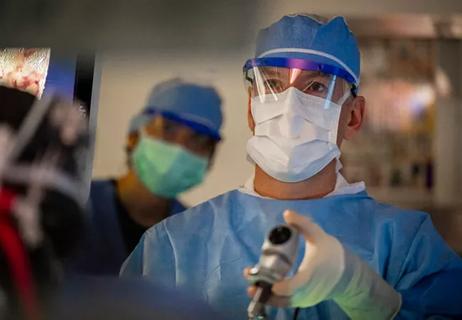
Fewer incisions and more control for surgeons

New Vice Chair of Innovation and Technology Dr. Matthew Kroh talks about device development, robotics, artificial intelligence and nurturing a culture of innovation
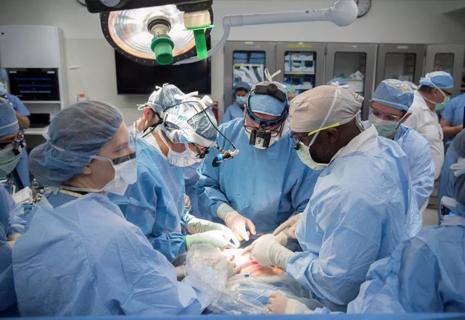
A concise summary of an historic operation
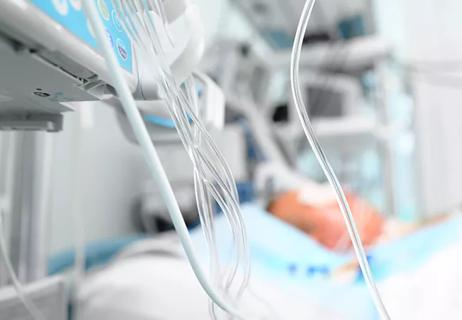
Multidisciplinary patient management, standardized care contribute to success
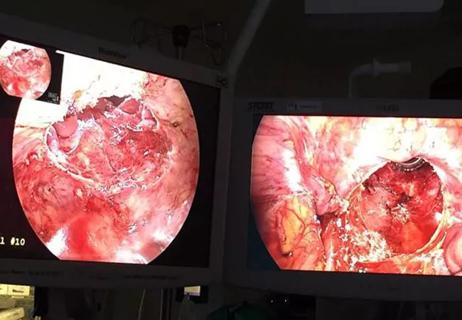
TaTME's uses now extends beyond rectal cancer
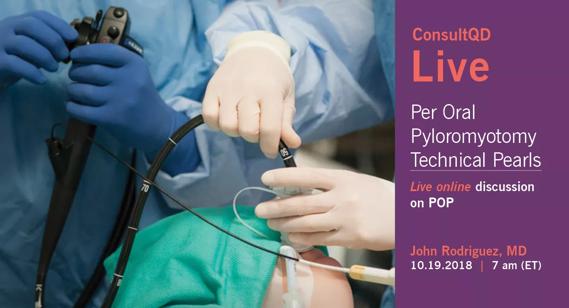

Goals: lower cost and ensure optimal outcomes

Transoral incisionless fundoplication an effective, new option